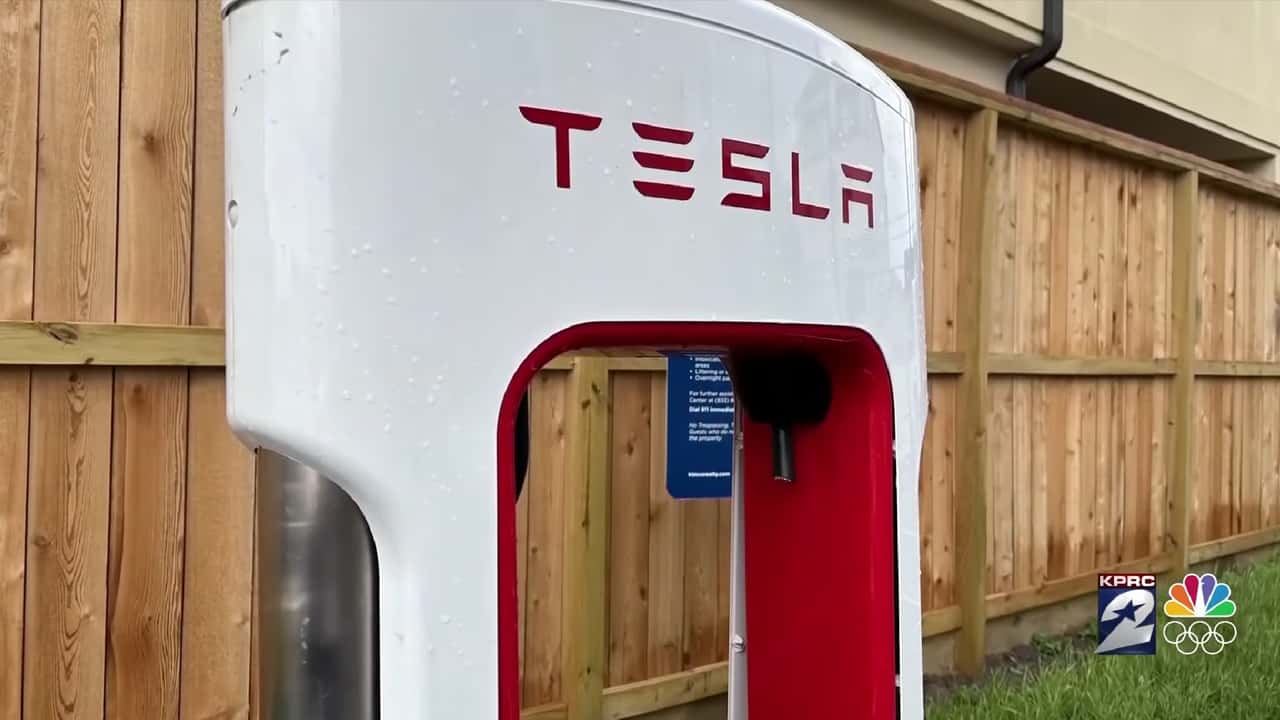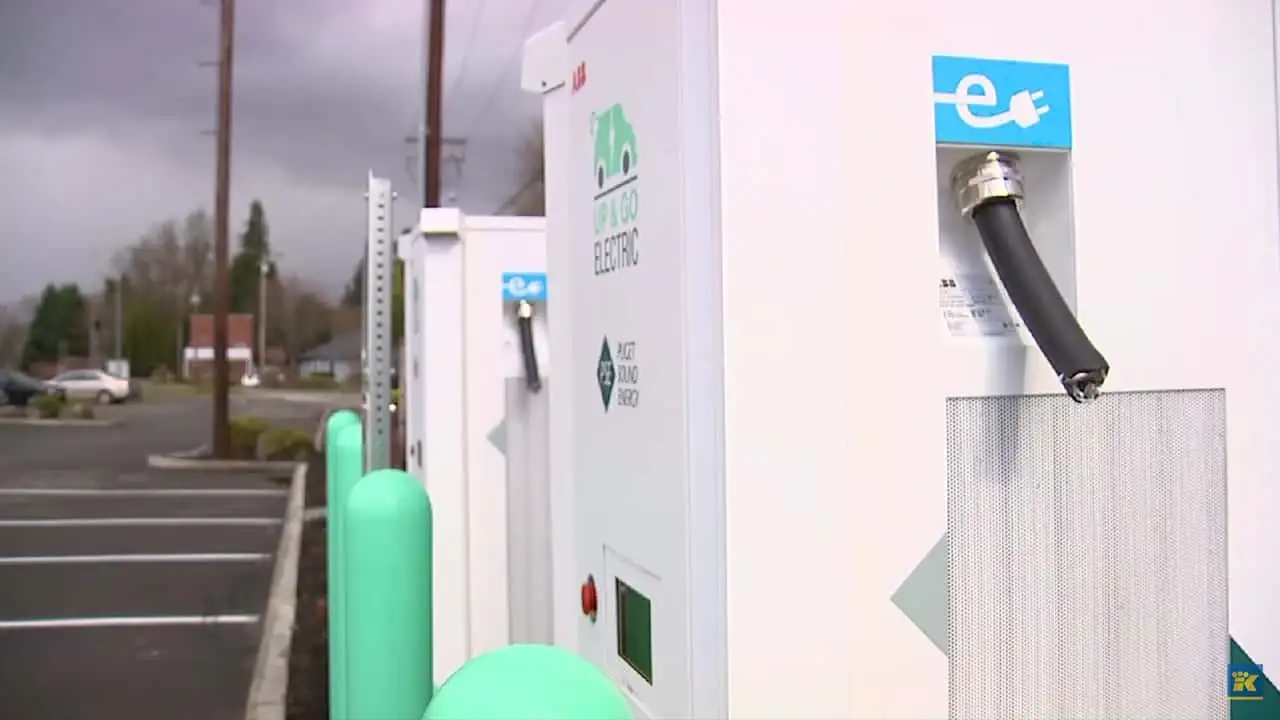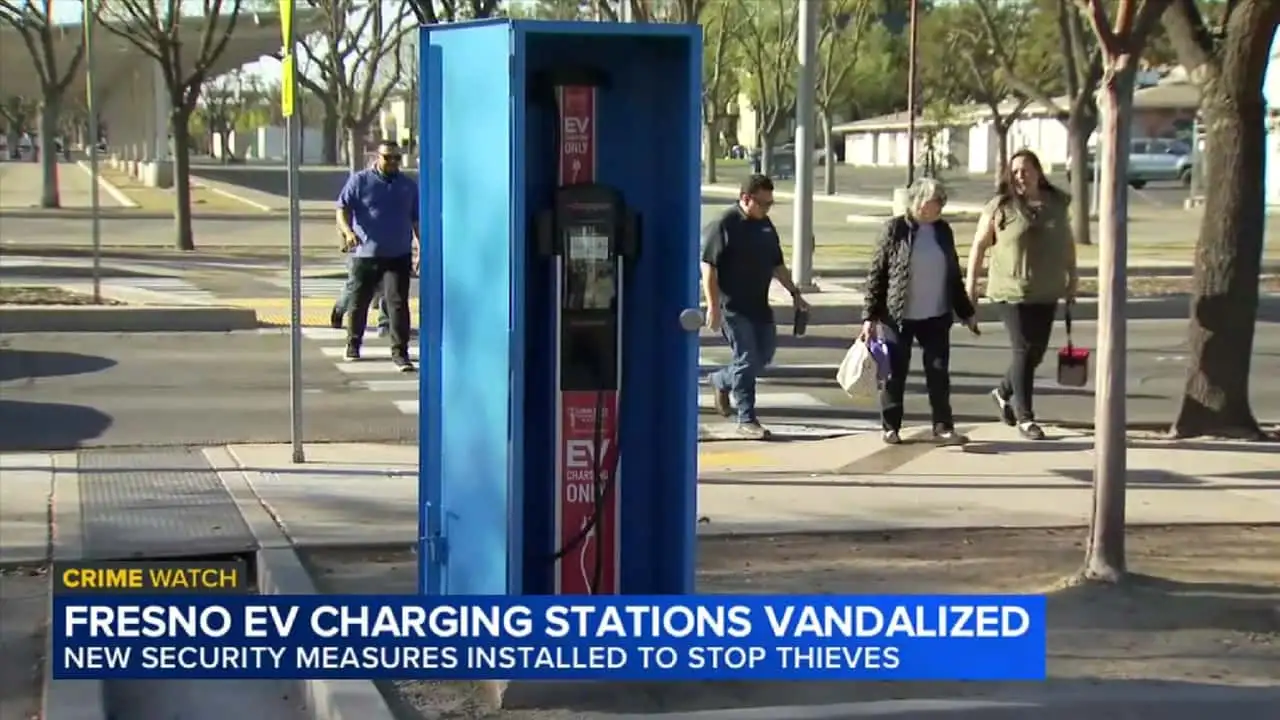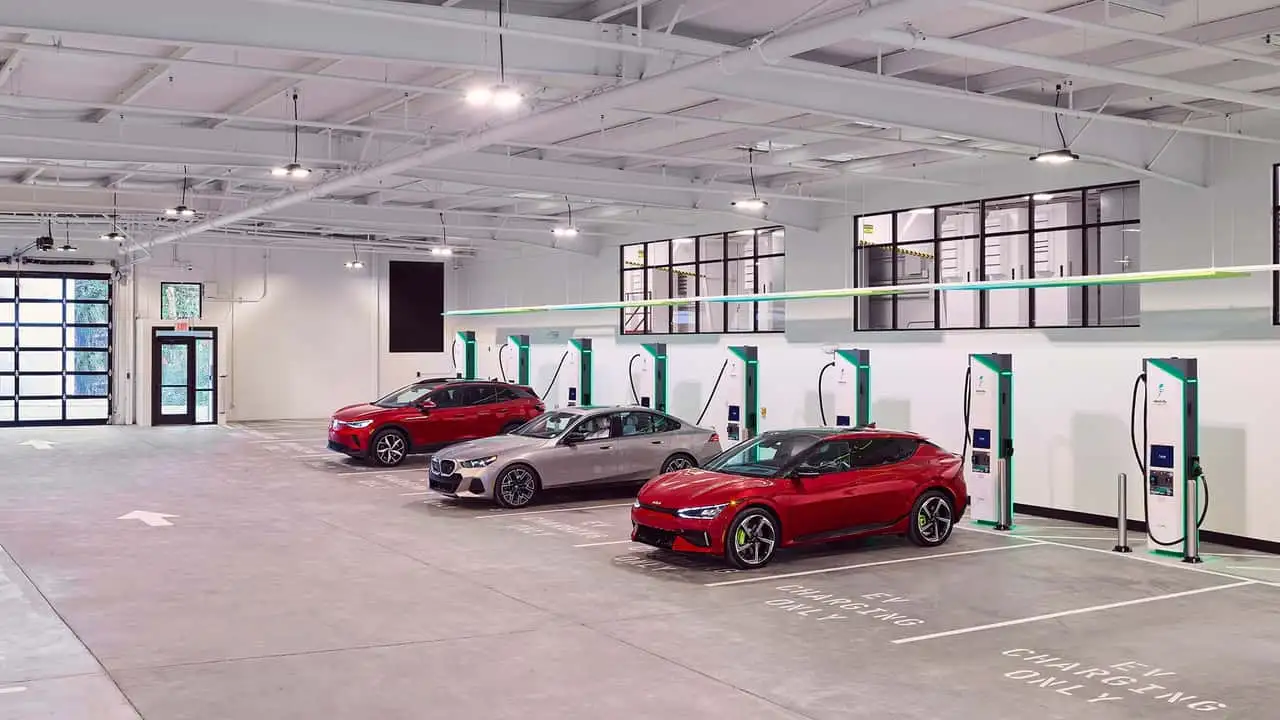New York-based itselectric is rolling out a clever plan for urban Level 2 charging that could solve several problems at once
“Nobody drives in New York City. There’s too much traffic.” Cliché as that joke is, the truth is that New York’s streets and parking garages are full of more than 2 million registered cars, with countless more coming in and out daily from New Jersey, Connecticut and other places.
Even with efforts to improve public transit and make more car-free spaces, those vehicles probably aren’t going anywhere for a long time. Now, imagine a future where most—if not all—of those cars are electric. Where, and how, will they stay charged? Right now, about 42,000 EVs are registered in New York City (not counting the ones parked in the city that are registered elsewhere) but like EVs everywhere, that number is growing quickly.
Brooklyn-based startup itselectric has one potential solution to this problem: curbside EV chargers that draw electricity from spare capacity in residential and commercial buildings, and supply power to cars via detachable cables that drivers take with them. The chargers themselves are discreet, sleek-looking silver posts placed close to the curb, and they don’t need the bulky frames seen on other streetside options.
In theory, this keeps New York from becoming a kind of hellscape of charging wires for cars everywhere, interfering with sidewalks and bike lanes. The program allows property owners to generate income—estimated at up to $1,000 per year—by “selling” their electricity to drivers. And it’s an aggressive, innovative approach to a known problem that so far has very few solutions: how to keep EV drivers charged up if they don’t have access to a home garage or even chargers at an apartment complex parking lot. (And it keeps people from running 100-foot extension cords out of their windows to charge their EVs, a sight that’s not terribly uncommon in Brooklyn these days.)
“I hate to say it, but generally speaking, urban solutions are often ones that are not the ones that are in front of the line,” itselectric co-founder Tiya Gordon told InsideEVs recently. “It should be as easy as it is when you go home and plug in your car at night in your garage, but the exact thing on the street.”
Itselectric was founded by Gordon, a veteran of the design industry, and her husband Nathan King, an architect who specializes in sustainability and urban projects. Their idea has been making waves as of late. The nascent company has already struck up a partnership with the New York City Economic Development Corporation and Hyundai Cradle, the Korean automaker’s venture capital and startup investment arm. This year, it closed on a $2.2 million pre-seed round of funding, set up six pilot chargers at an old bank building in the Brooklyn Army Terminal in Sunset Park, recently won a “2023 Next Big Things in Tech for Sustainability” award from the publication Fast Company, and has and big expansion plans for 2024. They’ve gone from countless rejections to a waiting list for streetside chargers in the hundreds.
“A year ago, in November 2022, we were still in this phase of cold calling cities and saying, ‘Hey, have you heard of this thing called curbside charging?’” Gordon said, “Now we’re responding to inbound [requests from cities] that are that are specifically looking for not only curbside charging, but for innovation in curbside charging.”
How It Works
The installation of an itselectric curbside charger comes at no cost to the property owner; the startup covers that. The chargers plug directly into the building’s existing electrical connections and run off spare electricity; “We don’t even have to connect to the utility,” Gordon said, because these are slower Level 2 chargers designed for everyday parking and overnight use. And a property owner can earn passive income by “selling” electricity to EV owners.
For the drivers’ part, they’re issued a cord they carry in their vehicles with them, an idea that’s already common in Europe but has yet to make real inroads into the U.S. They download an app, get a cable—a kind of curlycue design to not take up more space than is necessary—and pay to charge as needed. Tesla drivers are issued a NACS cable and all other automakers get a CCS one, but Gordon sees NACS cables being for “everyone” as that plug increasingly becomes the standard for U.S. charging. “It just makes sense. Carry the cable you need and just plug into a universal socket,” she said.
Drivers pay for the energy used in kilowatt-hours, Gordon said. “We set that for each city based on what the utility base rate is; every city, of course, is different,” she said. The goal is to provide drivers with “convenient, on or close to their block, charging that is affordable [and] far less the cost of further afield DC-based chargers.”
Gordon said the decision to be a Level 2-only company was both a pragmatic one and a necessary one. With slower Level 2 chargers, EV drivers can typically charge overnight or just add electrons during short- or medium-length parking stops. So far, Gordon said, much of the focus on growing the charging infrastructure has been around DC public fast chargers to enable road trips and longer-distance travel.
This is despite the Biden Administration saying that of the 1.2 million public chargers expected by 2030, a staggering 1 million of those are expected to be Level 2 chargers. “How do we get a million chargers in the ground in seven years?” Gordon said. “Currently, the country has 126,000 Level 2 chargers, most of them probably broken, right? So we need speed and scale to get there.”
itselectric founders Gordon and King.
Level 2 charging is especially necessary in places like New York, where the vast majority of residents lack access to the home charging options that single-family homeowners can enjoy. And while companies like the ride-hail startup Revel are adding a growing number of DC fast chargers in and around New York, EV drivers will need more of both types of charging, and perhaps more Level 2 charging than they think.
“It’s not a scalable solution,” Gordon said of urban DC fast chargers. “Any four-stall DC fast charger uses as much energy as a 300-unit building in a month. We often say we’re Team Level 2, because it’s the most obvious solution to meet our immediate charging needs in the next 10 years for this transition.” Gordon said their solution is cheaper to build, quicker and easier to install and uses far less power overall. Additionally, she said, “we are not constrained by [needing to make] an inter-utility connection, which is definitely dictated by the utility. We can literally go anywhere where there’s a building and a curb.”
What’s Next
America has a lot of buildings, a lot of curbs and a growing number of EV drivers who need charging options. As a result, itselectric seems eager to branch out beyond New York. The company recently unveiled 25 more chargers coming soon to several properties in Detroit.
For the Motor City, the startup has already secured grants from DTE Energy and the Michigan Office of Future Mobility and Electrification. Gordon added that eight additional cities are on the roadmap for 2024, and other municipalities are putting out requests for charging project proposals that seem tailor-made to what they’re doing. (Itselectric isn’t yet disclosing which cities it plans to deploy chargers in next.)
While some questions remain over the economics involved if certain electric connection projects get especially difficult, itselectric seems to be onto something as more and more cars in New York—and soon, other big cities—go electric. Part of their challenge will be convincing more investors to look to Level 2 charging instead of DC fast charging, but Gordon said she thinks that puts itselectric in a unique position to capitalize on a market that’s necessary but underserved.
“We’re in a niche space,” Gordon said. “But no one’s touching this space that we’re looking at.”




